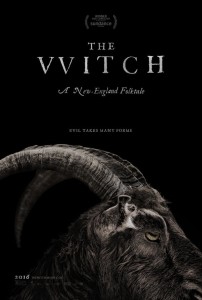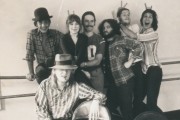After making a splash at last year’s Sundance Film Festival, writer/director Robert Eggers critically acclaimed New England Folktale, The Witch, is set to hit theaters this week. Winning points for story, mood, acting and more, this period horror film is bound to win plenty of fans as it aims to unsettle those willing to witness this excellent piece of genre cinema.
New England, 1930. After being banished by their church, an English farmer (Ralph Ineson) and his family relocate from their former plantation to an uninhabited plot of land on the edge of an eerie forest. As soon as the move is complete, ominous events begin to occur immediately, the first of which is the shocking disappearance of their baby. As their crops begin to fail, the eldest child Thomasin (Anya Taylor-Joy) is accused of being possessed, and their entire existence being threatened, only time will tell who will survive as witchcraft, black magic and fear engulf their home.
What feels like a moody mix of The Babadook and The Kill List, Eggers’ The Witch is another welcomed entry into the subtle, grim and unnerving side of horror. It’s a film, much like the aforementioned titles, that focuses on paranoia and atmosphere to generate its sweat induced fear rather than cheap gimmicks and pop-up scares. I’d like to reiterate the sweat induced fear because while the movie doesn’t always get under your skin, it commands your attention, trapping you within its story and slowly pulling beads of sweat from your body until you have a moment to breathe, it’s at that point you temporarily snap back to reality in realize you’re sitting there with a cold sweat.
Driven by an excellent score and beautifully haunting cinematography, this brooding period piece does something that I didn’t expect, it tells a story about a family spiraling into chaos utilizing very little of the paranormal aspects. Yes, black magic and witch craft were there, but the way the story unfolds, you can’t really tell how much of it existed, if the demonic presence was a real thing or if it was just remote location, the stillness of the environment, and the isolation causing the family to go a little stir crazy, driving each other insane. It’s a story of a family struggling to survive after being banished from their main food source only for a father to let his pride get the better of him, resulting in poor decisions that cost his family dearly.
For a movie like The Witch to work, the acting needs to gel with the rest of the production and it mostly does. Everyone does their bit to make you feel like you’re part of the period and part of pre-Salem witch trials hysteria. While Anya Taylor-Joy may have been the star, I was actually more impressed with Kate Dickie as Katherine, the mother who experiences emotional trauma after trauma, and Ralph Ineson, as the dutiful and religious husband William. The two of them were really the emotional focal points of the film, representing two very different sides of the troubled situation they found themselves in while Anya’s character remained stuck in the middle acting as a bridge rather than the core. The tug of war between the parents’ response to each escalating event and its impact on them and their children is what drove the drama and tension.
With no competition at all this weekend, The Witch is poised to be the must-see film when it comes to a critical consensus. Robert Eggers hits all the right buttons for horror junkies and thankfully brings something unique to the table for this year’s horror selection. Expect to find this on many best-of horror lists come the end of this year as The Witch is the fireside folktale you won’t want to miss out on.


















Recent Comments